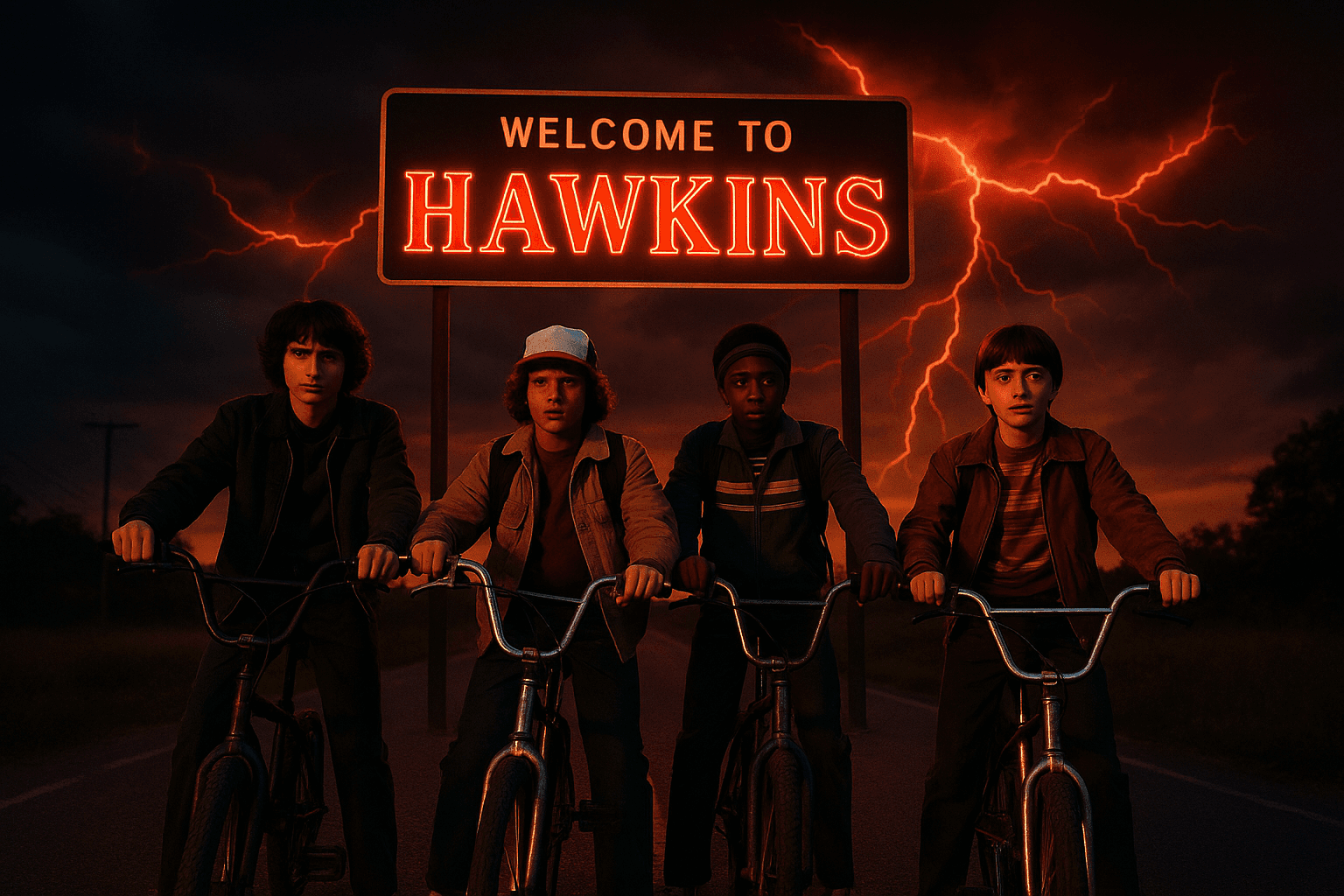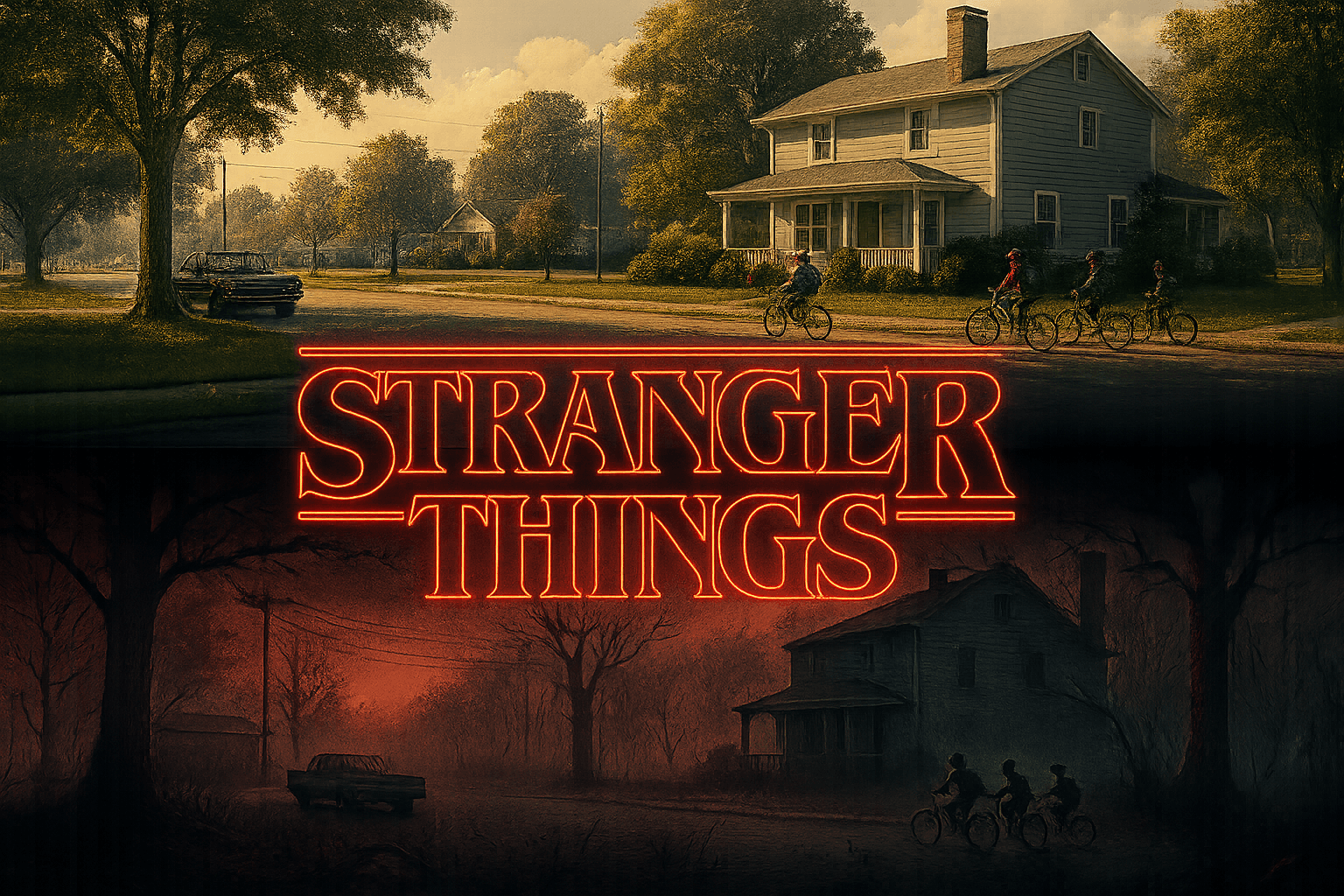Stranger Things: 80s Terror Revisited - TheAttReviews Review
ByThe Att
•

The summer of 2016 saw Netflix detonate a synth‑drenched nostalgia bomb with Stranger Things (34 episodes across four seasons, fifth arriving late 2025). Set in 1980s Hawkins, Indiana, the series fuses Spielbergian suburbia with Stephen King menace as missing kids, covert labs and a dimension called the Upside Down collide. Its blend of BMX bikes, D‑&‑D lore and Cold‑War paranoia turned an original show into a cultural juggernaut, scooping SAG, PGA and multiple Emmy nominations while reviving Kate Bush on global charts. If you grew up on VHS horror or simply crave escapist adventure, Stranger Things promises equal parts heart, humor and hair‑raising terror.
Woke Rating: 4/5 - Nostalgia Over Agenda
Despite Hollywood's rising identity‑politics quotient, Stranger Things mostly keeps its eye on story. Yes, a later‑season subplot introduces a lesbian character and Season 4 foregrounds a strong female lead in combat, but neither element hijacks the narrative; they unfold organically inside the 1980s setting. There's no race‑or‑gender re‑casting of legacy IP, no sermonising about systemic oppression, and historical verisimilitude remains intact—Indiana in '85 still looks, sounds and behaves like Indiana in '85. The occasional pronoun joke or modern moral aside earns a mild eye‑roll, yet the show's core is friendship, courage and supernatural horror. Hence a 4/5: woke sprinkles present but easily ignored, leaving the binge largely politics‑free.
At its core, Stranger Things is a hymn to lost American childhood. Walkie‑talkie camaraderie evokes Stand by Me; basement Dungeons‑and‑Dragons sessions speak to imagination before smartphones; and government paranoia channels Reagan‑era distrust of shadowy labs. Under the neon, the Duffers explore grief (parents searching for lost children), trauma (survivors scraping for normalcy) and faith—characters cling to Christmas lights, radio static or 8‑bit high‑scores as talismans against cosmic dread. The Upside Down literalises the era's fear of nuclear annihilation: a mirror America, rotting and toxic, creeping into safe suburbia. By fusing intimate coming‑of‑age arcs with apocalyptic stakes, the series argues that bravery is not the absence of fear but the refusal to abandon hope.
Few ensembles evolve this confidently. Mike and company mature from wide‑eyed kids to world‑weary teens without shedding their empathy; Steve Harrington's journey from egotistical jock to protective mentor embodies genuine contrition, not cheap redemption. Hopper's blue‑collar stoicism cracks to reveal paternal vulnerability, while Joyce's frantic tenacity underlines maternal heroism without magic powers or Mary Sue shortcuts. Eleven's arc—learning language, loyalty, then autonomy—remains the emotional linchpin, balancing telekinetic spectacle with profound loneliness. Crucially, weaknesses matter: Lucas grapples with skepticism, Max with survivor's guilt, Will with lingering trauma. Such textured human flaws ground each cosmic showdown.
Share this article:
